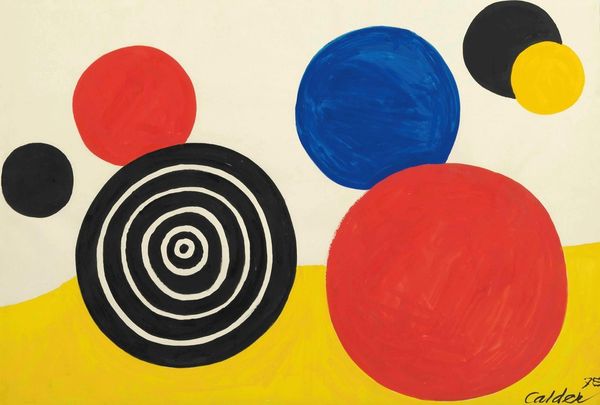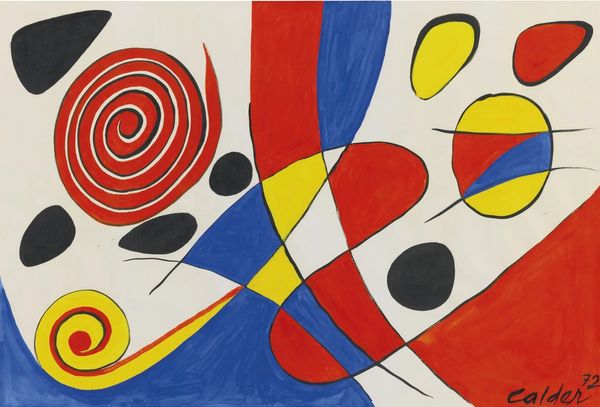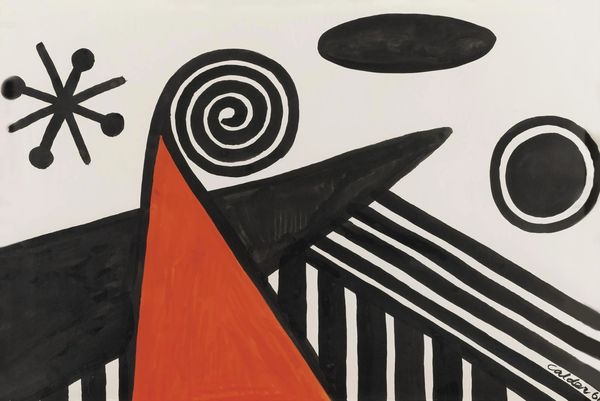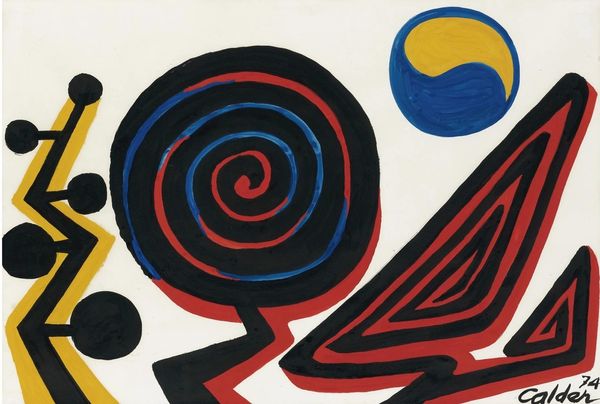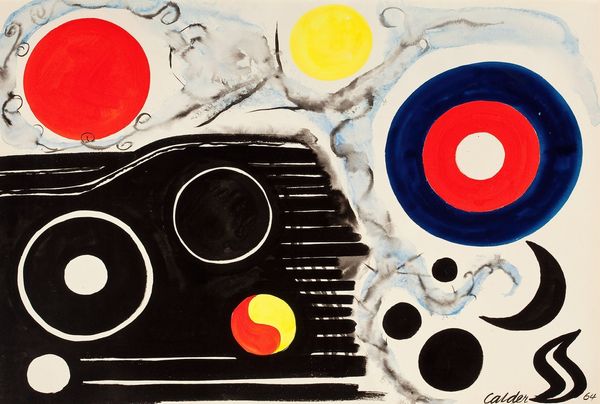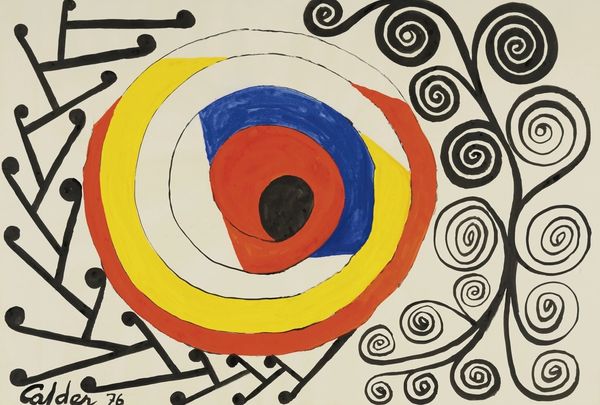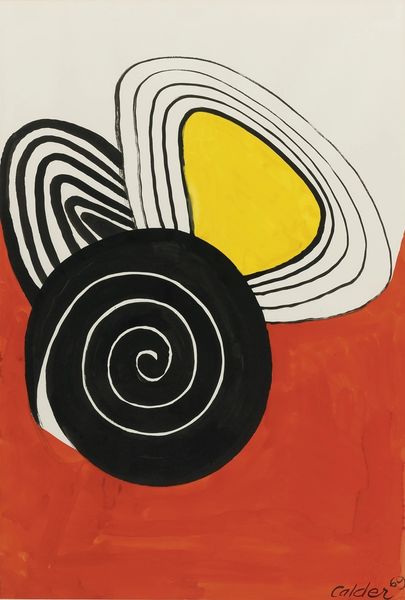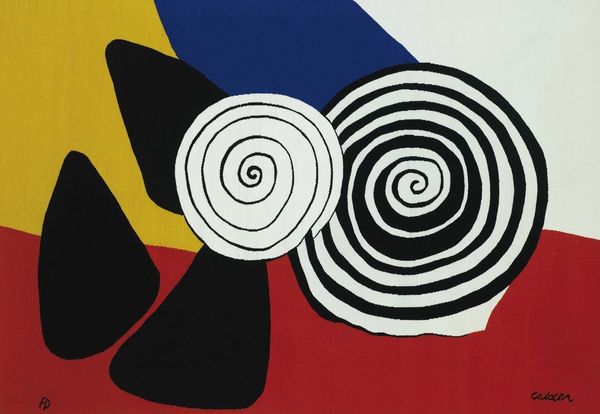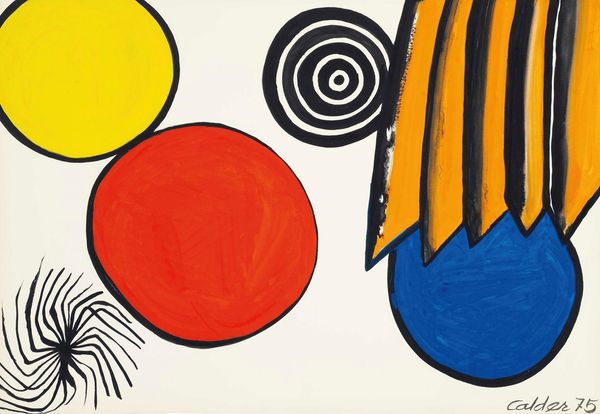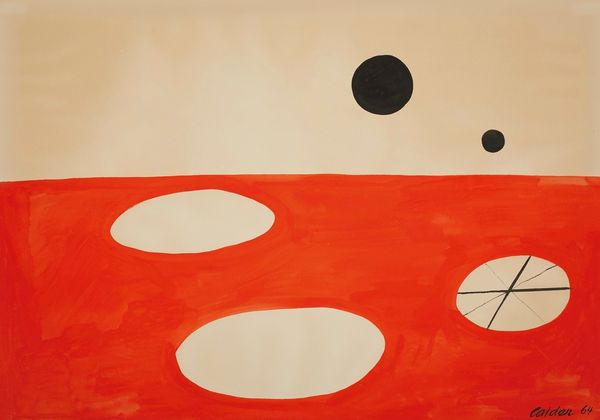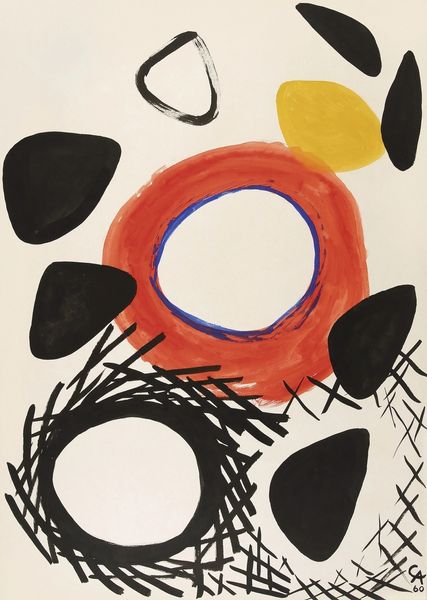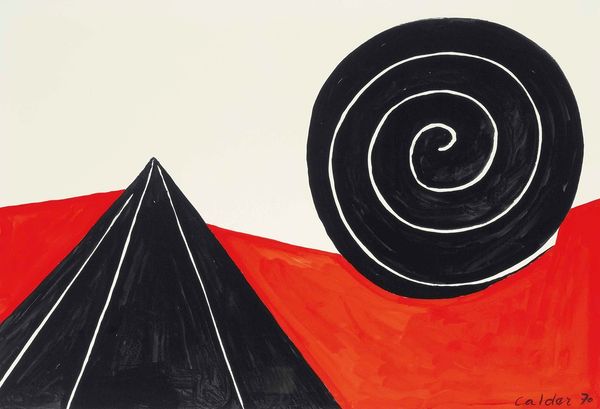
acrylic-paint
#
pop art
#
acrylic-paint
#
abstract
#
geometric
#
abstraction
#
pop-art
#
line
#
modernism
Copyright: Modern Artists: Artvee
Curator: Alexander Calder created this vibrant acrylic work, "Palette on Four Prongs," in 1969. It exemplifies his transition into bolder, flatter planes of color. What do you make of it? Editor: It strikes me as playful, even with the limited palette. The shapes, especially that central swirling mass, feel dynamic despite being static. It's quite striking how such simple materials and forms can evoke a sense of movement and joy. Curator: Calder had already established a prominent role in the art world by the late 60's. The Museum of Modern Art held a retrospective of his work in 1943, solidifying his position in the history of art. His sculptures were admired not just by art critics, but also by children; his works democratized what art could be. Editor: Interesting you bring up MoMA. Calder used readily accessible industrial materials in innovative ways, like sheet metal and wire. I find this challenging the separation between fine art and functional design, something not always readily celebrated by established institutions, or wealthy private collectors of this period. Curator: Precisely. Though embraced by institutions like MoMA, Calder’s use of commonplace materials subtly critiqued the perceived exclusivity of "high art." His forms reference biomorphic abstraction, drawing from surrealism and other abstract vocabularies already on display in prominent collections. His focus on lightness and color made them inviting to a broader public. Editor: And this piece feels particularly grounded in its materiality, with its clear acrylic washes that provide distinct color boundaries. It is so cleanly crafted, but also has a playful hand-touched sensibility in its gestural lines and application. It invites close inspection. Curator: Indeed, "Palette on Four Prongs" shows a distinct modernist approach to color, line, and form—very characteristic of the optimistic aesthetics associated with mid-century design, and its intersection with popular culture at that moment in time. Editor: Well, seeing how Calder used everyday materials and the mechanics of making to open up sculpture and painting to new interpretations, it makes me rethink what’s typically presented as museum-worthy versus simply well-crafted. Curator: For me, reflecting on Calder reminds us of how artists can use abstract language to democratize aesthetic experiences within institutions.
Comments
No comments
Be the first to comment and join the conversation on the ultimate creative platform.
